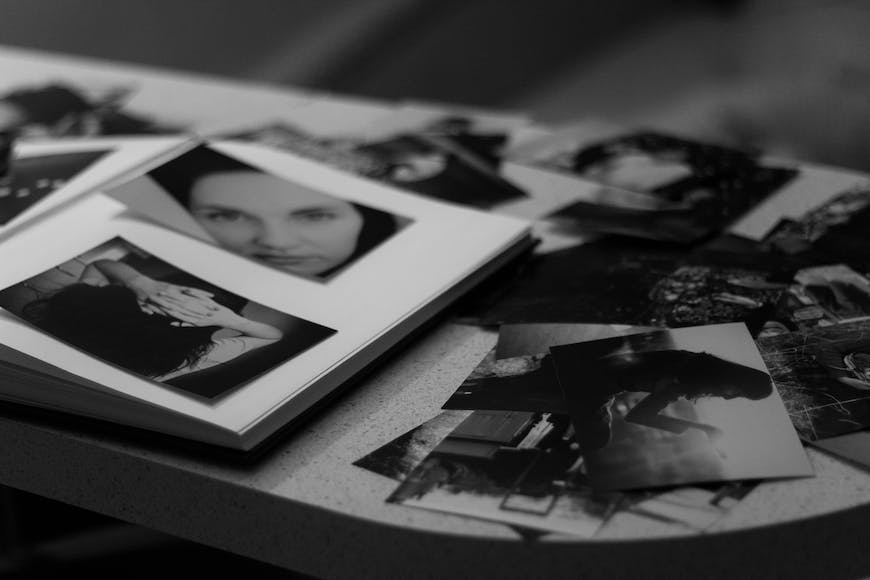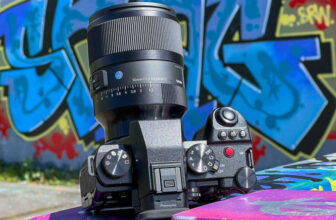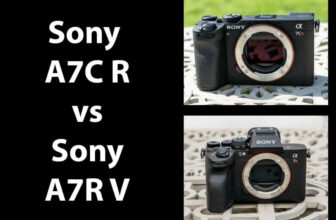
[adinserter block=”1″]
Did you know that photography can help you heal mentally and emotionally?
In this article, I’ll tell you all about therapeutic photography – something you can do on your own.
I’ll also discuss phototherapy. For this, you need to see a professional, but now that you know it exists, you can ask for it if you think it might help.
Once you’re clear on what these techniques are and how they work, I’ll suggest some exercises and courses to help you dive into therapeutic photography.
If you’re ready to learn and experience the healing capacity of images, let’s get started!
What Is Therapeutic Photography?
Credit: Laura Chouette
According to Emanuela Saita and Martina Tramontano, “Therapeutic Photography is used to address photo-based activities that are self-initiated and conducted by the individual (or as part of an organized group or project), but where no formal psychotherapy is taking place.”
From this definition, you can see that therapeutic photography is self-therapy. So, you don’t have to see a trained professional to follow a therapy process.
It also says you can do this as part of an organized group. Therefore, you may seek help and guidance – you don’t have to do all the work alone.
This help doesn’t have to come from a psychologist or a qualified therapist—it may be a peer-to-peer interaction.
You can also see that therapeutic photography is not just about creating photos but also about photo-based activities. This means that you can use photography in other ways, such as interpreting old family pictures, making a collage, or imagining photographs to stimulate conversation.
It’s also important to note that even if you choose a therapeutic photography exercise that involves taking photos, you don’t need any prior training.
Remember, this is not about technical perfection or becoming an experienced photographer – it’s about the therapeutic experience and healing power.
Therapeutic photography also includes broader social action photography, according to the PhotoTherapy Centre. This type of photography ” aims to improve well-being, reduce social exclusion, and create positive change in the community.”
How do Therapeutic Photography Exercises Help Relieve Stress?
Therapeutic photography can help you deal with stress in different ways. In a very generic sense, it can be a recreational outlet.
Following therapeutic photography techniques and achieving results also gives you a sense of accomplishment. This releases dopamine – a neurotransmitter associated with pleasure.
The production of dopamine can counteract the effects of the stress hormone cortisol.
Also, you can use specific therapeutic photography techniques to deal with specific sources of stress. For example, if your stress is caused by social anxiety, you can use photography as a tool for creative expression.
What is the Difference Between PhotoTherapy and Therapeutic Photography?
Judy Weiser has widely studied the separation between both disciplines. She has written extensively about them, and her phototherapy techniques are followed by professionals around the globe.
The main difference is that phototherapy techniques are done only by a trained therapist to help their patients with their mental health issues.
Phototherapy is often part of a bigger branch of mental health treatment called art therapy. Art therapists are certified clinicians who may use phototherapy techniques with their patients.
Instead, therapeutic photography is done by yourself or within a group of friends or peers – no therapist is involved.
Some techniques can be used in both contexts – whether this is taking pictures, remembering through old photographs, or even imagining photographs.
How Much Do You REALLY Know About Photography?! 🤔
Test your photography knowledge with this quick quiz!
See how much you really know about photography…

The History of Therapeutic Photography
We can trace the use of photography in mental health back to 1856 when Hugh Welch Diamond documented the different stages of treatment in his patients.
Aside from being a photographic record, he gave the images to the patients so they could see how others viewed them.
However, because this is a practice done by a mental health professional, this is the origin of phototherapy. In any case, it helped shed light on photography’s therapeutic value.
So, the use of photography as a therapeutic tool continued and evolved, peaking when used in the recovery of WWII veterans.
All the efforts up to this point had been in a clinical environment. However, therapeutic photography is done by the patient without a therapist.
While this practice had probably been going on for a long time, it wasn’t recognized as part of a mental health approach and didn’t have a name.
Judy Weiser formally addressed the separation between both practices towards the end of the 20th century.
In 2008, a third field was established at the International Symposium on Phototherapy and Therapeutic Photography.
The name of this field is photo art therapy, and it’s derived from phototherapy as it needs to be done by professional art therapists.
What Techniques Are Used in Therapeutic Photography?
There are many ways to use photography as therapy. It’s important to remember that not all of them are about taking pictures.
Be aware that therapeutic photography techniques can produce emotional reactions or bring to the surface repressed traumatic memories.
You may not know how to handle this—in which case, professional therapeutic intervention is advised.
These exercises aim to induce a positive change in your life. If they aren’t working this way, please stop practicing them and seek professional help.
Take self-portraits
A self-portrait can go a long way in helping your physical and psychological health. This is not something exclusive to photography; there are lots of artists who have used this technique throughout history. Think about Frida Kahlo or Van Gogh.
Taking self-portraits can help you deal with identity issues or improve low self-esteem. Self-reflection is also a way to communicate feelings in a nonverbal way.
There are many ways in which this technique can help your well-being.
Look at your photo albums

Credit: Suzy Hazelwood
As I mentioned, therapeutic photography techniques are photo interactive activities that may or may not involve taking photos.
This technique can be used as phototherapy and therapeutic photography, depending on whether you do it on your own or guided by a therapist.
There are many exercises you can do here. It may be that you reflect on why you saved certain images – how do they make you feel?
Or maybe you can reenact the pictures on the family albums. This could lead to a new interpretation of your relationship with family members.
3 Mindfulness Photography Excercises
Another branch of mental health photography focuses on mindfulness. These are some photography techniques you can use in your everyday life.
These can help you improve your creative process, self-expression, and maybe even your physical health, as they will have a calming effect.
Take a photograph each day and share it
Dr. Liz Brewster of Lancaster University and Dr. Andrew Cox from the University of Sheffield co-authored a qualitative study on a photo-a-day site.
After two months of studying what people photographed, how they captioned the photo and the interactions it created, they found that this activity could improve the participants’ well-being.
Here are some of the reasons why they feel it has a positive impact on mental health. However, you can read the full study here.
- If you’re always in a rush and stressed, stopping to take photographs slows you down and helps you to notice the small things in life.
- If you feel isolated, this can be a way of communication.
- If you live a sedentary life, it offers motivation to go out and exercise.
Set a timer and take a photograph

Credit: Daria Shevtsova
In our digital age, most people have a phone with a camera, so this exercise should be easy to practice.
Whatever you’re doing and wherever you are, you need to take a photograph when the timer goes off. This is a great way to stop and reflect on your surroundings, feelings, and what catches your attention.
Focus on details

Credit: Tran Huy
Mindfulness involves focusing on details. So, taking mindfulness photographs means that you’re capturing colors, textures, shapes, patterns, etc.
When you see a scene that you like and desire to photograph it, reflect on what you like about it and focus on that.
Are There Courses in Therapeutic Photography?
There are therapeutic photography courses where you can learn the techniques and improve your counseling skills. Here are a few courses that may interest you.
Therapeutic Photography at the Robert Gordon University, Scotland, UK.
Phototherapy Centre is the website of Judy Weiser. Here, you can find online and in-person courses both for PhotoTherapy and Therapeutic photography.
Therapeutic Photography at Belfast Exposed.
How Do I Get a Job in Therapeutic Photography?
While therapeutic photography doesn’t require a certified psychotherapist, it may be a good idea for you to enroll in a certified course or training program if you want to do a job out of it.
This will allow you to understand the human mind through therapeutic theory better and help you develop counselling skills.
You’ll also need to gain real-life experience. To do so, you can become an assistant to someone who is already established in the field or does some volunteer work.
As you grow in this career path, you can build a portfolio of projects and the results you obtained. It’s also important that you build a network.
One of the main professional outlets in this field is to teach the techniques to others so they can apply them to themselves and others.
Alternatively, you can organize projects that provide a safe environment for people to do photo-interactive activities to improve their mental health.
It’s also possible to use therapeutic photography for social and community work. For example, you can organize photo-interactive activities to help young people, marginalized groups, etc.
These career paths can be done independently, or you can work with an institution.
FAQs About Therapeutic Photography
Can photography be therapeutic?
Yes, it can be used by professionals treating mental illness as part of the therapy. In this context, the therapist uses phototherapy techniques.
Photography can also be used as self-therapy. In this case, it’s called therapeutic photography and can be done alone or with others.
Is therapeutic photography good for mental health?
Absolutely. It can help you to release stress, improve your self-esteem, put focus on your personal growth, etc.
What’s the difference between mindfulness photography and therapeutic photography?
Both practices are related and often overlap. However, therapeutic photography is mainly focused on improving your psychological health. Here, photo-taking is one of the photography-related techniques that can be used.
Instead, mindfulness photography is the practice of taking photographs to experience a moment fully. It lets you notice your feelings and connect your inner world with the environment. It is also a way of self-care.
What are the therapy pictures called?
Many people call the Roscharch test the “therapy pictures” as they are inkblots used by some psychologists. However, if you’re referring to photography as therapy, it may be phototherapy, therapeutic photography, or mindfulness photography.
How can a picture be therapeutic?
A picture can help you focus on positive life experiences, offer a recreational outlet to relieve stress, and develop a sense of accomplishment. There are many ways in which you can use photography as therapy.
What is the 21 days of mindful photography?
21 Days of Mindful Photography: A Course in New Perceptions is a book by Alexandria Searls. It contains a 21-day course that aims to give you a new perception of your photographic practice via a series of exercises.
Highly Recommended

Check out these 8 essential tools to help you succeed as a professional photographer.
Includes limited-time discounts.
Learn more here
[adinserter block=”1″]
Credit : Source Post






